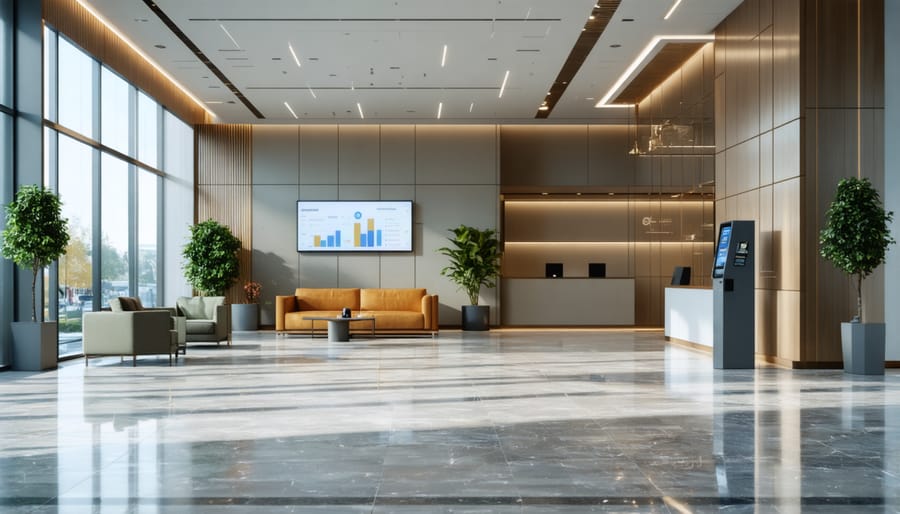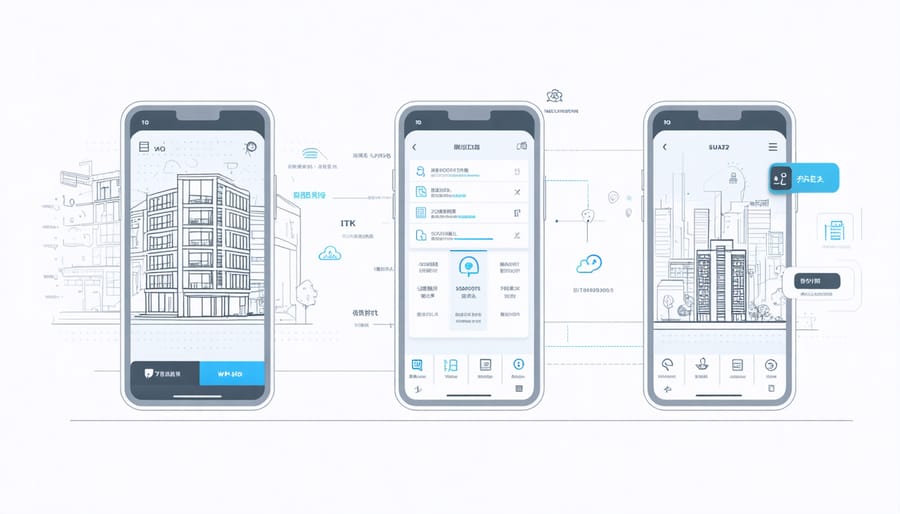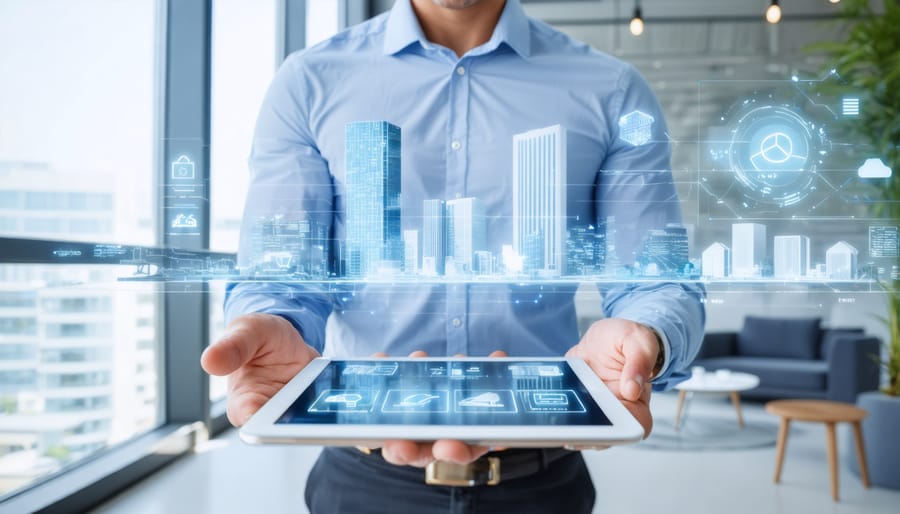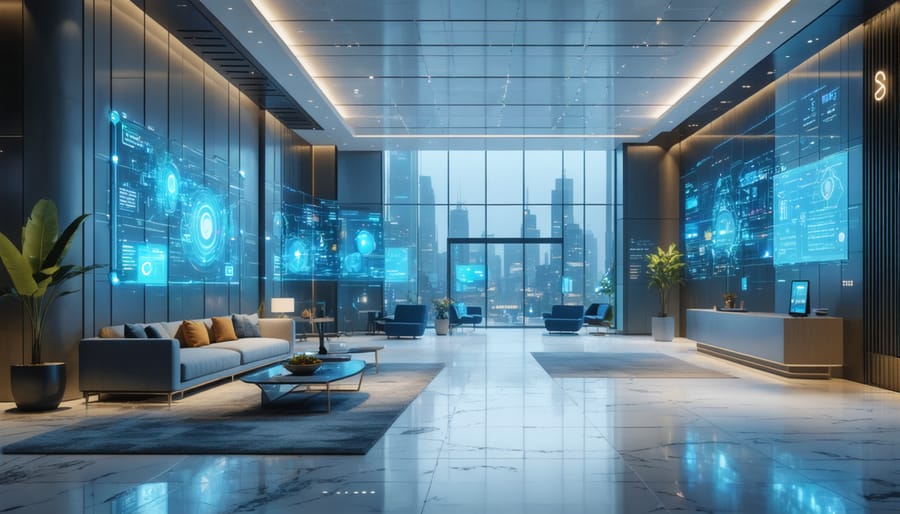Transform tenant experience from a buzzword into a strategic advantage by deploying comprehensive digital solutions that streamline maintenance requests, automate rent collection, and enable real-time communication. Modern property management hinges on driving better tenant experiences through data-driven decision making and predictive analytics.
The evolution of tenant expectations has fundamentally shifted from basic shelter provision to demanding seamless, hospitality-level service delivery. Forward-thinking property managers now leverage IoT sensors for preventive maintenance, mobile apps for community engagement, and AI-powered chatbots for 24/7 support – creating an ecosystem where tenant satisfaction directly correlates with asset value appreciation.
Industry leaders who prioritize tenant experience report 23% higher retention rates and 18% increased property values compared to traditional management approaches. This data-backed transformation requires strategic investment in both technology infrastructure and staff training, positioning properties not just as spaces to occupy, but as service-oriented environments that anticipate and exceed tenant needs.
The Evolution of Tenant Experience in Commercial Properties
From Basic Amenities to Digital Integration
The evolution of tenant experience has undergone a remarkable transformation over the past decades. In the 1970s and 1980s, basic amenities like functional HVAC systems, reliable elevators, and standard maintenance services defined adequate tenant service. Property managers focused primarily on addressing immediate maintenance concerns and ensuring basic safety requirements were met.
The 1990s saw the introduction of enhanced security systems and improved common areas, while the early 2000s brought a shift toward sustainability and energy efficiency. Today’s tenant expectations have expanded dramatically, driven by technological advancement and changing workplace dynamics. Modern tenants demand seamless digital integration, including mobile apps for maintenance requests, automated access control systems, and smart building features.
The integration of IoT sensors, building automation systems, and data analytics has revolutionized how properties operate and interact with occupants. Real-time monitoring of building systems, predictive maintenance, and personalized environmental controls have become standard expectations. This digital transformation has created a more responsive, efficient, and user-centric experience, fundamentally changing the relationship between property managers and tenants.

The Impact on Property ROI
Research consistently demonstrates a strong correlation between enhanced tenant experience and improved property performance metrics. Studies show that properties with high tenant satisfaction and ROI typically experience 23% lower turnover rates and command premium rental rates averaging 7% above market standards.
Properties prioritizing tenant experience report reduced vacancy periods, with spaces typically being re-leased 31% faster than comparable properties. This translates to significant cost savings in marketing expenses and lost rental income. Additionally, satisfied tenants are more likely to renew their leases, with retention rates increasing by up to 40% in buildings that implement comprehensive tenant experience programs.
The financial impact extends beyond direct rental income. Properties with high tenant satisfaction scores demonstrate enhanced asset value, typically commanding 15-20% higher sale prices compared to similar properties with average tenant satisfaction ratings. Furthermore, these properties often benefit from reduced maintenance costs due to better care of facilities and more proactive communication of maintenance issues by tenants.
Key Components of Modern Tenant Experience
Smart Building Technology Integration
Modern tenant experience is increasingly shaped by smart building technology, which seamlessly integrates IoT sensors, automated systems, and digital interfaces throughout the property. These technological solutions create an interconnected ecosystem that enhances comfort, security, and convenience for occupants while optimizing operational efficiency.
Advanced IoT sensors monitor environmental conditions, occupancy patterns, and equipment performance in real-time. This data drives automated responses in HVAC systems, lighting controls, and security measures, creating a responsive environment that adapts to tenant needs. Mobile applications serve as centralized interfaces, allowing tenants to control their space settings, book amenities, and communicate with property management through a single platform.
Building automation systems (BAS) coordinate various subsystems, from elevator operations to energy management, ensuring smooth functionality while reducing operational costs. Access control systems utilizing mobile credentials and biometric authentication provide enhanced security without compromising convenience. Smart meters and energy management systems enable precise monitoring of utility consumption, supporting sustainability initiatives and cost reduction strategies.
Digital twin technology creates virtual replicas of physical spaces, enabling predictive maintenance and strategic planning. These innovations not only improve the daily experience of tenants but also provide valuable data insights for property managers to make informed decisions about facility operations and future improvements.

Amenity and Service Innovation
Modern property managers are revolutionizing tenant experience through innovative amenities and services that address evolving tenant expectations. Smart building technologies now enable automated climate control, touchless entry systems, and integrated mobile apps that allow tenants to manage their space efficiently. These technological solutions not only enhance comfort but also contribute to operational efficiency and sustainability goals.
Wellness-focused amenities have gained prominence, with properties incorporating fitness centers, meditation rooms, and outdoor spaces designed for both relaxation and collaborative work. The integration of flexible common areas serves multiple purposes, from casual meetings to organized community events, fostering a sense of connection among tenants.
Service innovation extends to concierge-style offerings, including package management systems, on-site maintenance teams with rapid response capabilities, and dedicated tenant experience managers. Digital service platforms enable tenants to submit maintenance requests, book amenities, and communicate with property management instantly, streamlining the entire service delivery process.
Properties are also incorporating sustainable amenities such as electric vehicle charging stations, bike storage facilities, and green spaces with native landscaping. These features not only appeal to environmentally conscious tenants but also contribute to building certification requirements and overall property value.
The most successful amenity programs are those that respond directly to tenant feedback and usage patterns, utilizing data analytics to optimize service offerings and resource allocation. This data-driven approach ensures that investments in amenities and services deliver meaningful value to both tenants and property owners.
Communication and Support Systems
Modern tenant experience hinges heavily on robust communication and support systems, with digital platforms playing a pivotal role in facilitating seamless interactions between property managers and occupants. These systems typically integrate multiple channels, including mobile applications, web portals, and automated messaging services, creating a comprehensive engagement ecosystem.
Property managers are increasingly adopting cloud-based platforms that offer features such as maintenance request tracking, document management, and real-time notifications. These solutions enable tenants to submit service requests, access important documents, and receive updates about building operations through their preferred communication channels.
Advanced systems incorporate AI-powered chatbots for 24/7 support, handling routine inquiries and directing complex issues to appropriate staff members. This automation ensures prompt response times while reducing operational overhead. Analytics tools embedded within these platforms provide valuable insights into tenant satisfaction levels and common pain points, enabling property managers to make data-driven improvements.
Security and privacy considerations are paramount in these systems, with encryption protocols and secure authentication methods protecting sensitive tenant information. Integration capabilities with other property management tools, such as billing systems and access control platforms, create a unified experience for both tenants and managers.
Regular system updates and feedback loops ensure these communication platforms evolve with tenant needs and technological advancements, maintaining their effectiveness and relevance in enhancing the overall tenant experience.
Implementation Strategies for Property Managers
Assessment and Planning Framework
A systematic assessment and planning framework is essential for optimizing tenant experience in commercial and residential properties. The process begins with a comprehensive audit of current tenant satisfaction levels through surveys, interviews, and data analytics. Property managers should evaluate key performance indicators including response times to maintenance requests, common area utilization rates, and overall tenant retention statistics.
The assessment phase requires collecting both quantitative and qualitative data across multiple touchpoints. This includes analyzing service request patterns, reviewing communication effectiveness, and examining facility usage trends. Building managers should also conduct regular walk-throughs to identify potential areas for improvement in physical spaces and amenities.
Once baseline data is gathered, the planning phase involves developing a strategic roadmap for enhancement initiatives. This should include short-term quick wins and long-term structural improvements. Priority should be given to areas that directly impact daily tenant interactions and satisfaction levels, such as security systems, maintenance procedures, and communication channels.
The framework should incorporate regular feedback loops and continuous improvement mechanisms. This includes establishing clear metrics for success, setting realistic timelines for implementation, and allocating appropriate resources for each initiative. Property managers should also consider technological solutions that can streamline operations and enhance service delivery.
Stakeholder engagement is crucial throughout the process. Regular meetings with tenant representatives help ensure that improvement plans align with actual needs and expectations. The framework should remain flexible enough to accommodate changing tenant demographics, market conditions, and emerging technologies while maintaining focus on core service quality objectives.
Technology Selection and Integration
Selecting and integrating the right technology solutions for tenant experience requires a strategic approach that balances functionality, scalability, and user adoption. Modern digital tenant management platforms should align with both property management objectives and tenant needs while offering seamless integration with existing systems.
Key considerations for technology selection include cloud-based accessibility, mobile compatibility, and robust security features. The solution should support real-time communication, maintenance request management, and amenity booking while providing actionable analytics for property managers. Integration capabilities with building management systems (BMS), access control, and payment processing platforms are essential for creating a unified experience.
Implementation should follow a phased approach, starting with core functionalities before expanding to advanced features. This method allows for proper testing, user feedback collection, and necessary adjustments. Training programs for both staff and tenants should be comprehensive yet straightforward, ensuring maximum adoption and utilization of the platform’s features.
To ensure successful integration, establish clear metrics for measuring platform performance and user satisfaction. Regular assessments of system usage, response times, and tenant feedback help identify areas for improvement and optimization. Additionally, maintain open communication channels with technology providers for ongoing support and updates.
Consider future scalability when selecting solutions, as tenant experience requirements evolve with technological advancements. The chosen platform should accommodate emerging technologies like IoT sensors, AI-driven analytics, and smart building features while maintaining user-friendly interfaces and reliable performance.

Case Study: Successful Tenant Experience Transformation
One Park Avenue, a 750,000-square-foot commercial property in Manhattan, exemplifies successful tenant experience transformation through strategic implementation of modern amenities and digital solutions. In 2019, the building’s management company initiated a comprehensive renovation project aimed at addressing declining tenant satisfaction scores and increasing vacancy rates.
The transformation began with a thorough assessment of tenant needs through surveys and focus groups. The findings revealed that occupants desired better communication channels, enhanced building access control, and more collaborative spaces. The property management team responded by implementing a multi-faceted approach.
First, they deployed a custom-built tenant experience platform that streamlined all building-related communications, maintenance requests, and amenity bookings. The mobile app allowed tenants to access the building using their smartphones, schedule meeting rooms, and receive real-time updates about building operations.
The physical transformation included converting the underutilized ground floor into a modern lobby with a coffee shop, flexible workspace, and wellness center. The management also renovated common areas on each floor to create touchdown spaces for informal meetings and collaborative work.
The results were remarkable. Within 18 months of implementation:
– Tenant satisfaction scores increased by 45%
– Lease renewal rates improved from 65% to 89%
– Building occupancy rose to 96%
– Service request response times decreased by 60%
– Energy efficiency improved by 25% through smart building integration
The success of One Park Avenue’s transformation hinged on three key factors: comprehensive tenant feedback integration, seamless technology implementation, and thoughtful physical space improvements. The property’s approach to enhancing tenant experience has since become a benchmark for commercial real estate modernization, demonstrating how strategic investments in tenant experience can deliver measurable returns for property owners while creating more valuable spaces for occupants.
The evolution of tenant experience in property management continues to shape the future of real estate operations. As technology advances and tenant expectations evolve, successful property managers must prioritize personalized services, digital integration, and sustainable practices. The integration of smart building technologies, mobile applications, and data analytics has become essential for delivering superior tenant experiences while optimizing operational efficiency. Looking ahead, the industry trends point toward increased automation, predictive maintenance systems, and enhanced communication platforms. Property managers who embrace these innovations while maintaining a human-centric approach will likely see improved tenant retention rates, higher property values, and stronger competitive advantages. The future of tenant experience will undoubtedly be shaped by continued technological advancement, changing workplace dynamics, and growing emphasis on wellness and sustainability in the built environment.

